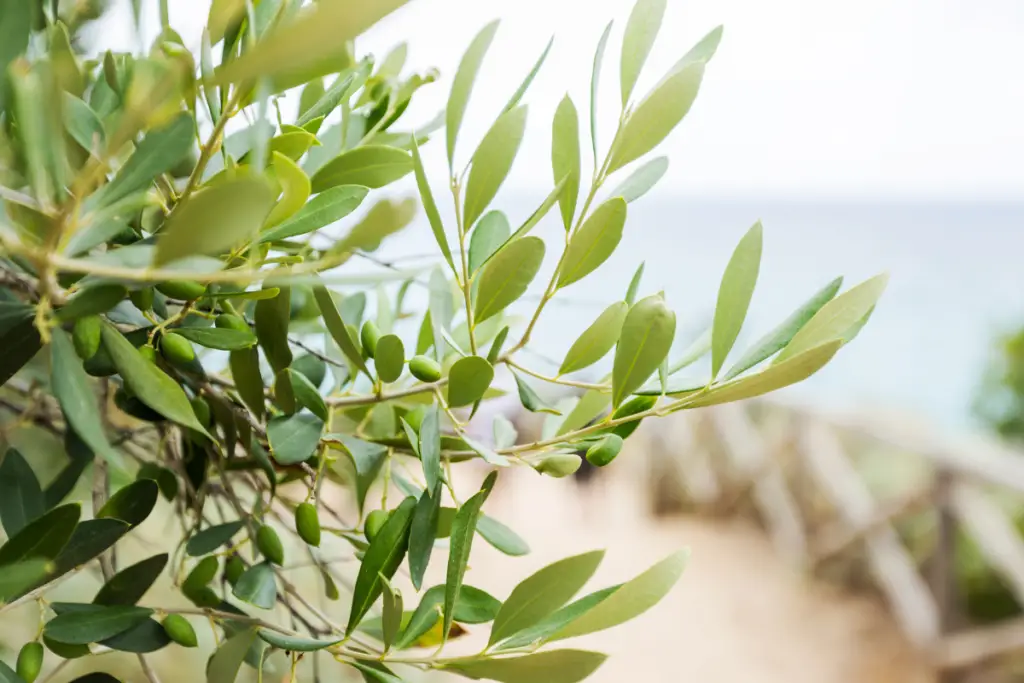Olive trees are a popular choice for gardeners and homeowners alike, but many people wonder if they are high-maintenance plants.
The answer to this question is a bit complicated, as it depends on a variety of factors. However, in general, olive trees are relatively low maintenance and can thrive in a range of conditions.
One of the reasons that olive trees are considered low maintenance is that they are drought-resistant and can survive in hot, dry conditions.
This means that they do not require frequent watering, which can be a significant time commitment for other plants.
Additionally, olive trees do not require a lot of pruning or other maintenance, making them an attractive option for those who want a beautiful garden without a lot of upkeep.
Overall, while olive trees do require some care and attention, they are not considered high-maintenance plants.
With the right growing conditions and a bit of occasional care, they can thrive and produce delicious olives for years to come.

Table of Contents
Understanding Olive Trees
Growth and Lifespan
Olive trees are known for their longevity, with some trees living for centuries.
They can grow up to 50 feet tall and have a spread of up to 30 feet. However, most olive trees that are grown for commercial purposes are pruned to a manageable size.
The growth rate of olive trees is slow, and it can take several years for a tree to reach maturity and start producing fruit.
The lifespan of an olive tree depends on various factors, including the climate, soil conditions, and the care it receives.
With proper care, an olive tree can live for over 100 years. However, if the tree is not well-maintained, its lifespan may be significantly shorter.
Ideal Climate and Soil Conditions
Olive trees are native to the Mediterranean region and thrive in warm, dry climates. They require a minimum of six hours of direct sunlight per day and prefer well-draining soil.
Olive trees can tolerate a range of soil types, including sandy and loamy soils, but they do not grow well in heavy clay soils.
The ideal temperature range for olive trees is between 60°F and 85°F. They can tolerate temperatures as low as 20°F but are susceptible to frost damage.
In regions with cold winters, it is essential to protect the trees from frost by covering them with blankets or using frost protection sprays.
Maintenance Requirements of Olive Trees
Olive trees are generally considered to be low-maintenance trees, but they still require some care to thrive.
Here are the key maintenance requirements for olive trees:
Watering
Olive trees are drought-tolerant and can survive with infrequent, deep waterings. However, during the first year of planting, it is important to keep the soil moist but not saturated.
After the first year, olive trees only need to be watered during prolonged dry spells.
Overwatering can lead to root rot and other issues, so it is important to avoid watering too frequently.
Pruning
Pruning is an important part of olive tree maintenance, as it helps to promote healthy growth and increase fruit production.
Olive trees should be pruned in the late winter or early spring, before new growth begins.
Dead or diseased branches should be removed, as well as any branches that are crossing or rubbing against each other.
It is also important to thin out the canopy to allow for better air circulation and sunlight penetration.
Fertilizing
Olive trees benefit from regular fertilization, especially during the growing season. A high-nitrogen fertilizer should be used in March, and then continued throughout the season.
However, it is important to avoid using wood chips for mulch, as they can rob the soil of nitrogen.
Instead, pine straw can be used and kept several inches away from the trunk.
Disease and Pest Control
Olive trees are generally resistant to pests and diseases, but they can still be affected by certain issues.
Common pests include olive fruit flies, scale insects, and spider mites.
These can be controlled with insecticidal soaps or horticultural oils.
Diseases like verticillium wilt and anthracnose can also affect olive trees, but they can be prevented by planting disease-resistant varieties and practicing good sanitation and cultural practices.
Benefits of Olive Trees
Olive trees are not only beautiful and majestic, but they also offer a range of benefits.
Here are some of the key benefits of having an olive tree:
1. Low Maintenance
Olive trees are incredibly low maintenance and require very little attention once they are established. They are drought-tolerant and can survive in a range of soil types.
They also do not require much pruning, making them ideal for those who want a beautiful tree without the hassle of constant maintenance.
2. Ornamental Value
Olive trees are often used for their ornamental value, as they are beautiful and majestic trees that can add a touch of elegance to any landscape.
They have a unique and distinctive look that makes them stand out from other trees.
3. Environmental Benefits
Olive trees are also beneficial for the environment. They are known for their ability to absorb carbon dioxide and help to reduce greenhouse gases.
They also help to prevent soil erosion and provide habitat for wildlife.
4. Culinary Uses
Olive trees provide olives, which are used in a range of culinary dishes.
Olives are a great source of healthy fats and are used in salads, sandwiches, and other dishes.
Olive oil, which is made from olives, is also a popular ingredient in cooking and is known for its health benefits.
Challenges in Growing Olive Trees
Growing olive trees can be a rewarding experience, but it also comes with its own set of challenges.
Here are some of the common challenges faced by olive tree growers:
Climate Requirements
Olive trees require a specific climate to thrive. They prefer warm, dry summers and mild winters.
If the climate is too cold, the tree may not produce fruit, and if it is too hot, the fruit may not ripen properly.
The ideal temperature range for olive trees is between 60°F and 85°F.
Therefore, those living in areas with harsh winters or extremely hot summers may face difficulties in growing olive trees.
Soil Requirements
Olive trees require well-drained soil that is not too acidic. If the soil is too heavy or clay-like, it may hold too much water and cause root rot.
On the other hand, if the soil is too sandy, it may not retain enough water, causing the tree to dry out. The ideal soil pH for olive trees is between 6.0 and 8.0.
Soil testing and amending may be necessary before planting olive trees.
Pests and Diseases
Olive trees are susceptible to various pests and diseases, including olive fruit fly, olive knot, and verticillium wilt.
The olive fruit fly lays its eggs in the fruit, causing it to rot and fall off the tree prematurely.
Olive knot is a bacterial disease that causes knots to form on the branches and trunk of the tree.
Verticillium wilt is a fungal disease that causes the leaves to wilt and turn yellow.
Proper pest and disease management is essential to ensure the health and productivity of olive trees.
Pruning and Harvesting
Pruning is necessary to shape the tree and promote fruit production. Olive trees require annual pruning to remove dead or diseased wood and to thin out the canopy.
Improper pruning can damage the tree and reduce its productivity. Harvesting olives can also be labor-intensive, as the fruit must be hand-picked and sorted.
The timing of the harvest is crucial, as olives that are left on the tree too long may become overripe and produce low-quality oil.
Overall, while olive trees are not necessarily high maintenance, they do require specific growing conditions and proper care to thrive.
Conclusion
Olive trees are not considered high maintenance plants, but they do require some care to thrive.
As with any living plant, they can experience periods of stress or require occasional adjustments in care. However, if they get the care they need, they can be low-maintenance trees.
One of the most important factors for olive tree care is sunlight. Olive trees need plenty of direct sunshine, ideally 8-12 hours of sun per day.
Indoor olive trees can be placed near a southern or west-facing window to maximize sun exposure.
Outdoor olive trees should be planted in a location that receives plenty of bright light.
Another factor to consider is watering. Olive trees are drought-tolerant and do not require frequent watering.
Infrequent, but deep waterings is all that is required. When first establishing an olive tree, the soil does need to remain moist, but not saturated.
Fertilization is another important aspect of olive tree care. Olive trees do not require frequent fertilization, but they do benefit from occasional applications of nitrogen-rich fertilizer.
It is important to avoid over-fertilizing, as this can cause damage to the tree.
- How to Dry Basil Leaves: A Professional Guide
- Is an Avocado a Fruit or Vegetable? Simple Answer and Explanation
- Does Pineapple Have Seeds? Exploring the Anatomy of Pineapples
- Blooming Through Winter: Can I Grow Vegetables Indoors in the Winter?
- What Can You Grow in a Greenhouse All Year Round: A Guide to Year-Round Greenhouse Gardening
- Are Blueberries Blue? Debunking the Myth of Their Color
















